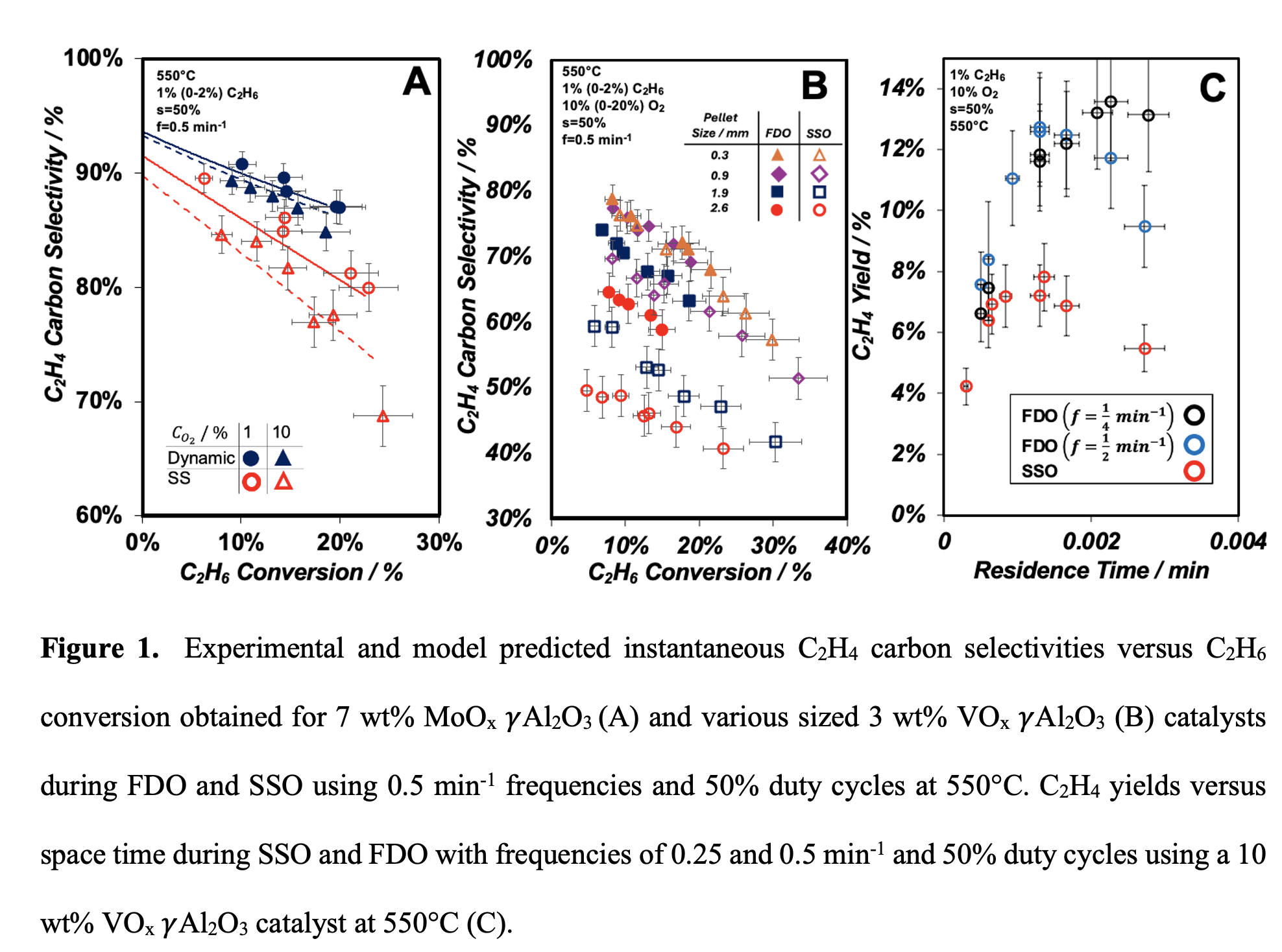2024 AIChE Annual Meeting
(569z) Enhancing Ethylene Selectivities through Kinetics and Mass Transport during Forced Dynamic Operation of Ethane Oxidative Dehydrogenation
Authors
Austin Morales - Presenter, University of Houston
Praveen Bollini, University of Houston
Michael Harold, University of Houston
Ethylene is a vital building block of the chemical industry used to manufacture higher value products such as ethylene glycol and polymers. Conventional ethylene production relies on steam cracking of larger hydrocarbons which is energy intensive due to its endothermicity. Catalytic oxidative dehydrogenation (ODH) of ethane is considered a unique alternative due to its exothermicity and light alkane feedstock. It has been proposed that nucleophilic lattice oxygen drives selective oxidation pathways while electrophilic gaseous and chemisorbed oxygen species promote unselective combustion reactions. This study implements forced dynamic operation (FDO) to separate ethane and oxygen thereby promoting and mitigating reactions with selective lattice and unselective bulk phase oxygens respectively. Fig. 1A illustrates elevated FDO ethylene selectivities compared to those achieved via steady state operation (SSO) over a 7 wt% MoOx Al2O3 catalyst. Selectivity enhancement via FDO is attributed to higher oxygen reaction orders of unselective overoxidation reactions compared to those of the selective ODH pathway. This example suggests that reaction orders may serve as metrics to deduce the viability of FDO to enhance desirable product selectivities. Another challenge encountered during scale up involves selectivity losses induced by industrially sized catalyst pellets. Extended diffusion length scales within these pellets decrease ethylene selectivities as it is unable to diffuse out of larger catalyst pellets before it undergoes oxidation to COx. Fig. 1B plots ethylene selectivities as functions of conversion for various sized 3 wt% VOx Al2O3 catalysts. Fig. 1B shows FDO mitigates selectivity losses encountered by SSO in larger catalysts. Higher FDO selectivities result in ethylene yields that exceed the SSO optimum as a function of residence time as illustrated in Fig. 1C. This work demonstrates the successful implementation of FDO to enhance ethylene selectivities and yields during ethane ODH which can be extended to other prominent selective oxidation process.


